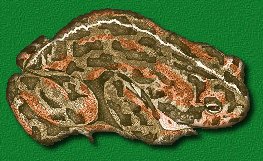what can you guys say about toads?
@richard140521 (24)
Philippines
1 response
@ryanphil01 (4182)
• Philippines
1 Nov 07
Toads are actually frogs. The term "toad" tends to refer to the "True Toads".... which are members of the family Bufonidae, containing more than 300 species. Toads are fat-bodied, where frogs are generally slim. Toads have warts, where a frog's skin is smooth. Toads can live in drier climates, where most frogs usually live in or near water. In the Tropics, where most anuran (members of the order comprising the frogs, toads, and tree toads) species occur, however, the differences are harder to determine, and some species could qualify as either toads or frogs.
Toads are characterized by: stubby bodies with short hind legs, warty and dry skin (usually preferring dryer climates), and prominent bony ridges on top of their heads with conspicuous swellings (parotoid glands) behind the eyes. The physical distinctions of toads to frogs, can easily get blurred because sometimes the features appear mixed or less obivious, and certain species even legitimately fall into both categories. It is not uncommon to find a warty skinned frog that isn't a toad. Even the inside stuff like cartilage structure has been found to sometimes fit both categories. Toads are often brownish or grayish in color with bright, jewel-like eyes with a transverse pupil; and slightly webbed toes. Toads are often stouter than frogs and cannot leap as far. The tongue of the toad is attached to the front of its mouth. The tongue is flicked forward from the mouth, and the sticky tip grasps the prey and carries it back to the mouth. Unlike most frogs, most toads do not have teeth.
Toads eat insects, grubs, slugs, worms, and other invertebrates like other amphibians do. As tadpoles, they eat plants. Toads, as pets, will eat fruit or vegetables. But toads in the garden, as insect eaters, should be valued for their role in pest-control!Toads are mostly nocturnal, resting during the day in burrows, in trees, or under leaves, undected unless they leap out from under your feet. Toads will also hibernate in burrows. In spring they mate, and the females (which tend to be bigger than the males) lay their eggs in the water in gelatinous strings that are 4 ft. (1.2 m) or more in length. These strands are usually double strands, where frog eggs are laid in clumps. There are some toads (genera Nectophrynoides) that are the only types of anurans to bear live young! Toads tend to lay many eggs because there are many hazards between fertalization and becoming full grown. In captivity, many species of frogs and toads can live for surprisingly long times. They seem generally to average somewhere between 4 and 15 years! Their tongues produce quantities of mucus to help in swallowing. All anurans (toads included) blink when they swallow. And because no bone exists between the eye and the mouth, the eye is pushed against the roof of the mouth, forcing the food further back. The parotoid glands, the swellings behind the eyes, are a defense against predators. These glands secrete fluids that are toxic if taken internally. The warts (on some toads) exude a similar toxin. Some toads can squirt poison at potential predators, from the parotoid glands. If you've ever hear a dog "scream" after picking up an American Toad, now you know what happened! And despite the myth, toads do not cause warts!
Source: http://www.naturehaven.com/Frog/toad.html





